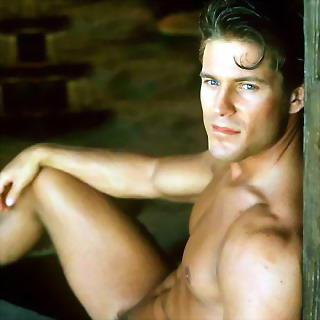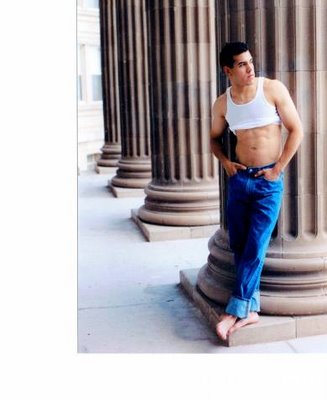 SAN FRANCISCO, CALIFORNIA – As a gay man, Steven Bobb tries to patronize companies that support the gay and lesbian community by advertising in gay publications and during shows such as “The L Word” and “Queer as Folk.”
SAN FRANCISCO, CALIFORNIA – As a gay man, Steven Bobb tries to patronize companies that support the gay and lesbian community by advertising in gay publications and during shows such as “The L Word” and “Queer as Folk.”Bobb, a credit manager at the Sheraton Fisherman’s Wharf in San Francisco, still remembers having an “Oh, wow, we finally made it to the mainstream” moment when Volkswagen and Ikea included male couples in ads.
It seems breathtakingly obvious that companies wooing gay and lesbian customers should use gay-themed imagery and content. Yet even though it’s been years since corporate America started running ads in gay publications and Web sites to target the nation’s estimated 15 million gay and lesbian consumers, many companies have taken surprisingly long to do something as simple as show two men holding hands or a lesbian couple with their son.
But no longer. More and more companies are developing ads with specific gay and lesbian themes – at no small expense – in a bid to capture a piece of a market with an estimated $640 billion in buying power.
“Typically, companies would come in, run their regular ads to get their feet wet, the same ads (they run) in other consumer books,” said Todd Evans, CEO of Rivendell Media, a New Jersey company that represents gay media companies.
“As they get more comfortable with it, they realize they don’t have backlash, and they go that next step to have specific creative (content). … That’s big news, because to make specific creative is a very expensive proposition.”
Last year marked the first time that advertising with gay-specific content constituted more than half of all ads in the U.S. gay and lesbian press, according to an annual report by Rivendell and New York’s Prime Access Inc. that reviews 151 gay and lesbian titles. Only three years before, gay-specific content constituted just 9.9 percent of all ads in gay and lesbian publications.
In national gay and lesbian magazines, such as The Advocate and Out, where national brands dominate, gay-specific ads were more common last year, accounting for 74.1 percent of all advertising – up from 59.1 percent in 2004. The report said that’s “a clear indication that the majority of national brands marketing to the gay and lesbian audience are creating unique advertising executions that appeal directly to these consumers’ sensibilities and mindset.”
“You can no longer have your product with a little rainbow flag next to it and expect to reach the gay and lesbian audience,” said Jeff Soukup, chief operating officer at San Francisco’s PlanetOut, which owns the Web sites Gay.com and PlanetOut.com, as well as the print publications The Advocate and Out. “You need to be very targeted. When Jaguar advertises, they don’t just show a car. They show a gay or lesbian couple walking toward it hand in hand.”
While they welcome inclusive images, gay and lesbian consumers are sophisticated enough to differentiate between window-dressing and companies that really walk the walk, said a variety of San Francisco Chronicle readers informally polled by e-mail.

“As they say, put your money where your mouth is,” wrote Don Savoie of San Francisco. “If companies really want to show their diversity, support for (gay and lesbian) events and domestic partnership benefits are strong ways to do it, especially if they are facing a tough backlash from groups who claim to be ‘family-friendly’ or ‘traditional values.’ I am inclined to support companies who show resolve and backbone.”
Sponsoring events, such as gay pride festivities, is one key way companies try to show that they’re serious about the market.
“Companies who go into sponsorship are aware of the need to show support for the community and not appear to be pandering to us just to get a dollar,” said Michael Wilke, founding executive director of the Commercial Closet Association, a non-profit group that tracks images of gays and lesbians in advertising.
San Francisco’s recent gay pride festivities, for example, had two-dozen corporate sponsors. “We find that (corporate) partners who come to us (have) a very deep commitment” to (gay and lesbian) causes, said Lindsey Jones, executive director of the San Francisco Lesbian, Gay, Bisexual and Transgender Pride Celebration Committee, which produced the event. “As a community, we know what it’s like to be marketed to. What tends to be important is corporate partners who stay with the movement. I think the loyalty increases.”
Robert Witeck, CEO of Witeck-Combs Communications, a Washington marketing and public-relations firm that specializes in gay and lesbian consumers, said many corporations have matured in their approach to the market, targeting different segments, rather than treating it as one indistinguishable group.
“Not all gay people are the same,” he said. “We’re not homogeneous even though we have the word ‘homosexual.’ ”
Moreover, gay consumers regularly show up in studies as having more allegiance to companies that court them. “Loyalty stats of gays and lesbians are higher than loyalty stats for NASCAR fans,” PlanetOut’s Soukup said.
Companies that work to be gay-friendly have experienced some backlash, but it has come mostly in the form of bad publicity, rather than effect on the bottom line.
“There has not been any evidence of success on the part of these conservative organizations to silence companies that are interested in the gay market,” Wilke said. “Companies today recognize that they can’t afford to lose any customers, so that means being sensitive to everyone but going after everyone they decide is relevant.”
from The Journal Gazette
No comments:
Post a Comment